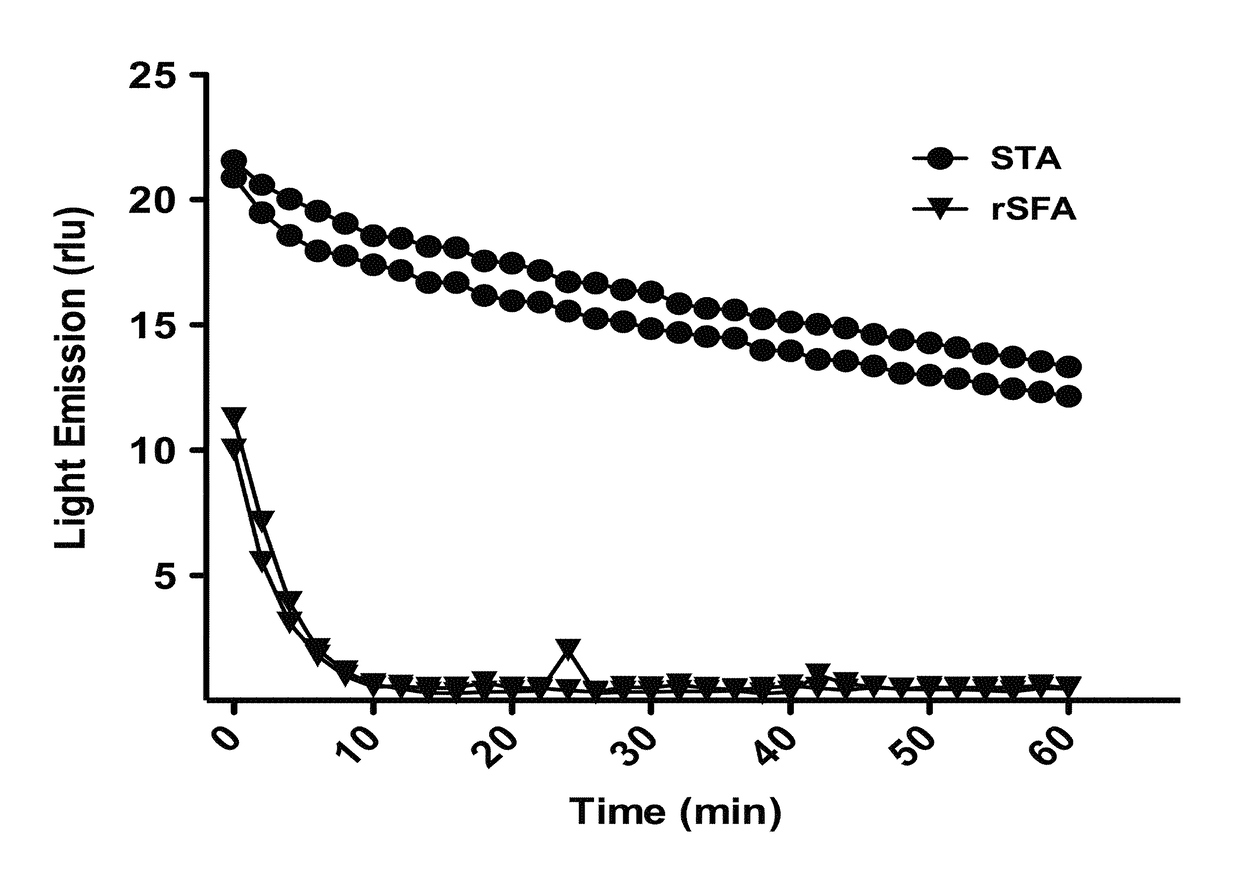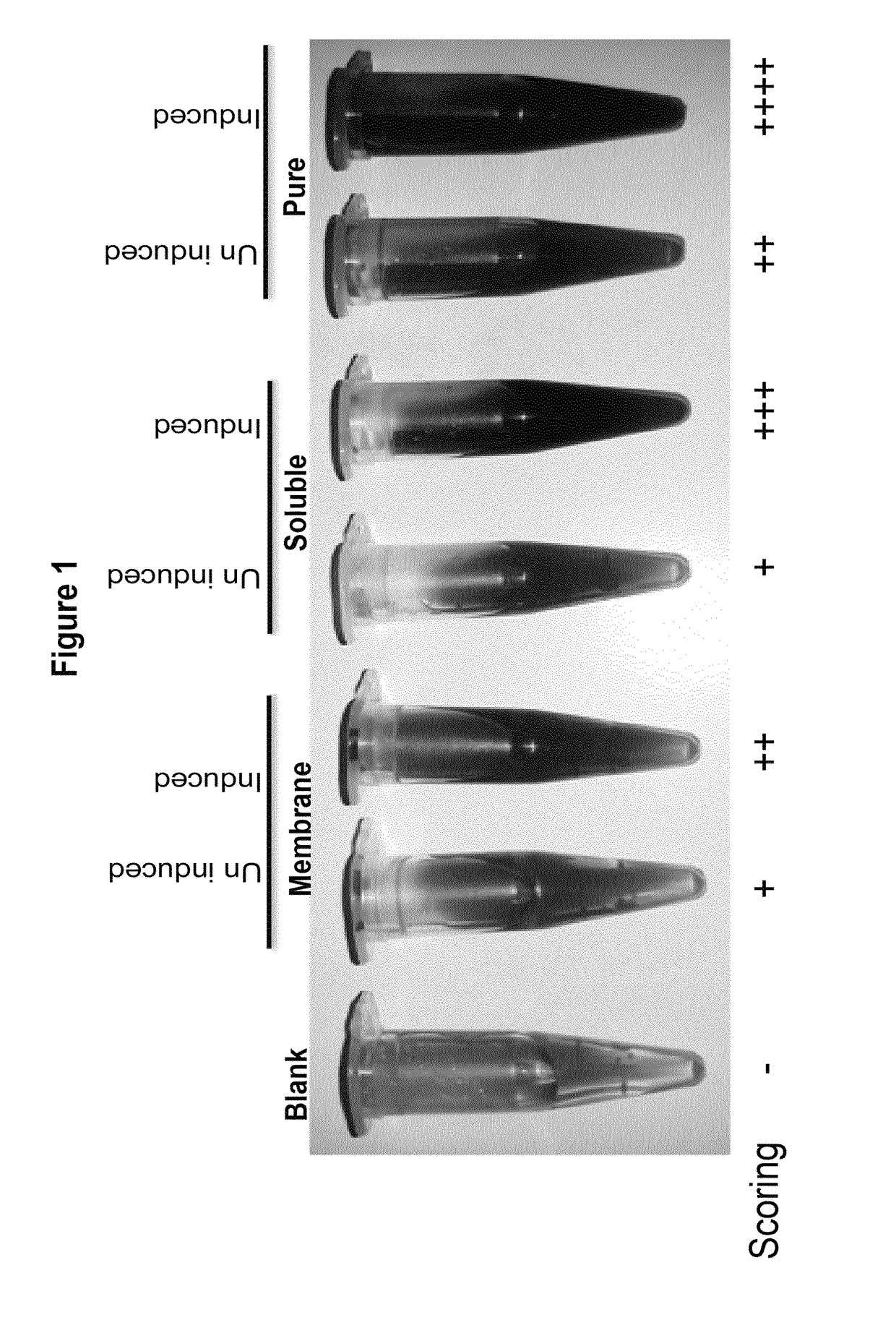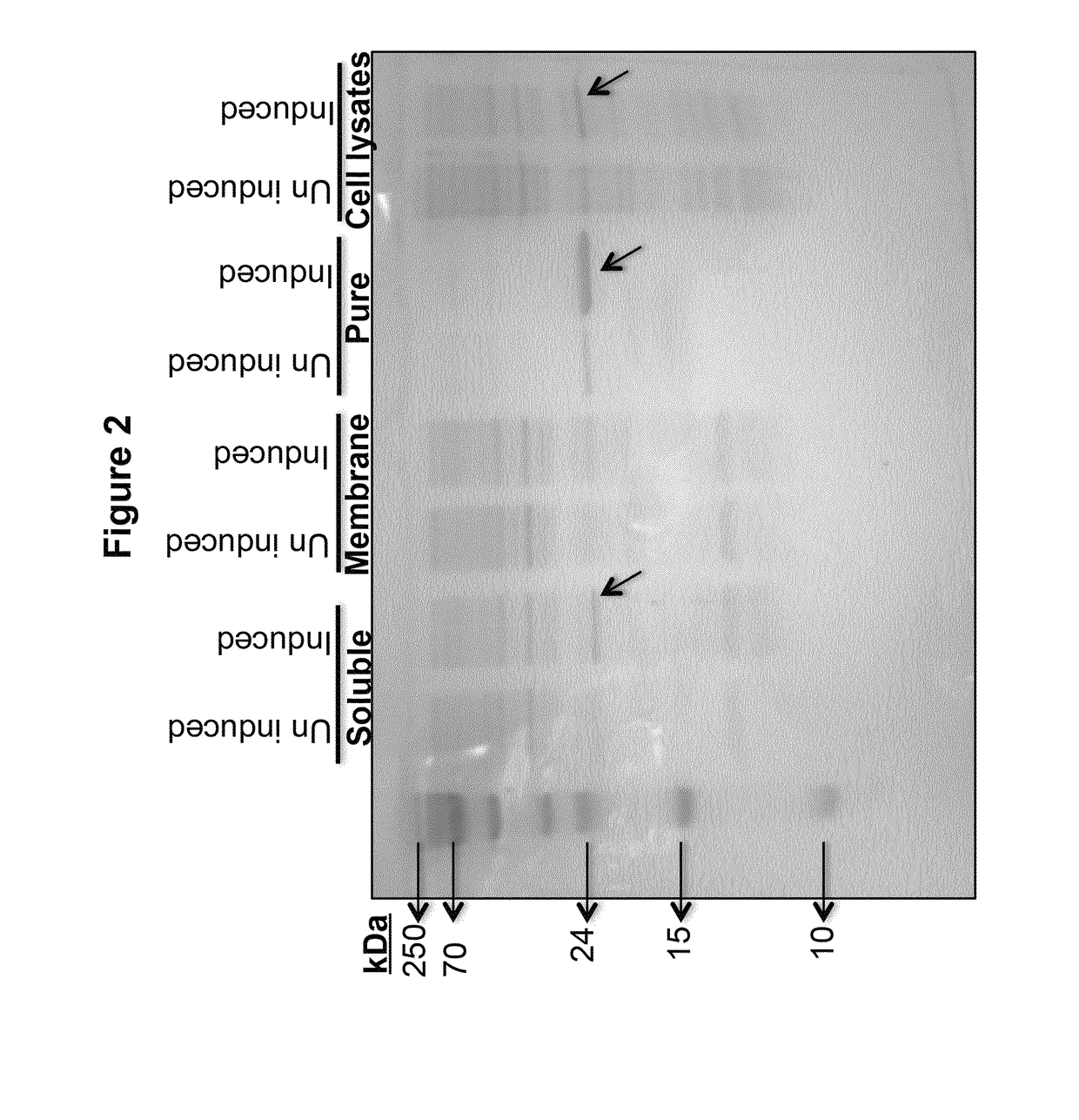Analytical and diagnostic methods utilizing shigella flexneri apyrase
- Summary
- Abstract
- Description
- Claims
- Application Information
AI Technical Summary
Benefits of technology
Problems solved by technology
Method used
Image
Examples
example 1
Production and Colorimetric Evaluation of Recombinant Shigella flexneri Apyrase (SFA)
[0168]The SFA was produced and purified as described in the materials and methods section. The purified enzyme fraction was examined using a colorimetric assay to identify the presence of bacterial apyrase. As can be seen in FIG. 1, the colorimetric assay clearly shows the color difference that directly corresponds to expression levels of apyrase enzyme expression, thus revealing its cellular location. In all of the cases, a clear difference in the color can be seen between non-induced and induced cultures in comparison with the color of the blank sample.
[0169]As shown in FIG. 2, a clear correlation can be drawn between the colorimetric results and apyrase expression profiles of the clones and their localization. The enzyme, rSFA was constantly overexpressed in induced cultures at 25 kDa, especially in whole cell lysates and soluble fractions, but not in membrane fractions, thereby indicating its lo...
example 2
Sequence Analysis Between rSFA and STA
[0170]Once the protein expression was confirmed by gel electrophoresis and colorimetric assay, the rSFA gene product was sequenced to identify the nucleotide sequence in order to compare with the reference sequence WP_010921592.1 obtained from the NCBI database (FIG. 3A). As can be seen in the figure, the cloned oligonucleotide fragment of SFA containing Apyrase-6×His (rSFA) and the expressed sequence (pBL21-Apyrase-6×His) sequences fell in the desired range (see FIG. 3A). As can be seen in FIG. 3B, the rSFA differs from the reference SFA only at N- and C-termini.
example 3
rSFA is More Efficient in ATP-Degradation Compared to STA and is Stable
[0171]The measurements of the decay of the light emission from the firefly luciferase reaction (FIG. 4) described the ATP-degradation activity between the two apyrases, rSFA and STA. The rSFA reveals a clear elimination of ATP and its analogues in ˜10 min compared to that of STA. In the other experiment, as can be seen in FIG. 5, luminescence was increased upon the addition of ATP in both cases, while, addition of apyrase resulted in a decay of the light because of ATP depletion. Deliberate addition of extra ATP during the reaction revealed a similar ATP depletion trend. However, the rSFA, exhibited more rapid ATP-depletion activity than did the commercially available STA. When ATP as well as the apyrase preparations was diluted 10-fold, the ATP depletion was reduced accordingly.
[0172]The rSFA samples were kept at 4° C., then frozen and freeze-thawed to check its stability. An effort was made to see if the rSFA c...
PUM
| Property | Measurement | Unit |
|---|---|---|
| Fraction | aaaaa | aaaaa |
| Fraction | aaaaa | aaaaa |
| Molar density | aaaaa | aaaaa |
Abstract
Description
Claims
Application Information
 Login to View More
Login to View More - R&D Engineer
- R&D Manager
- IP Professional
- Industry Leading Data Capabilities
- Powerful AI technology
- Patent DNA Extraction
Browse by: Latest US Patents, China's latest patents, Technical Efficacy Thesaurus, Application Domain, Technology Topic, Popular Technical Reports.
© 2024 PatSnap. All rights reserved.Legal|Privacy policy|Modern Slavery Act Transparency Statement|Sitemap|About US| Contact US: help@patsnap.com










